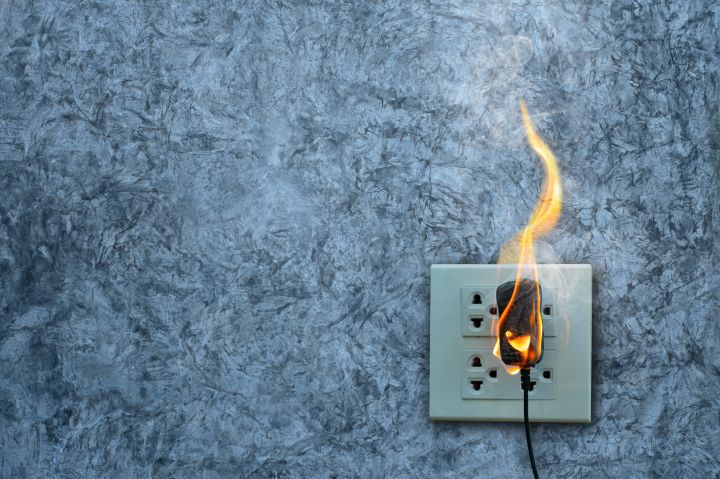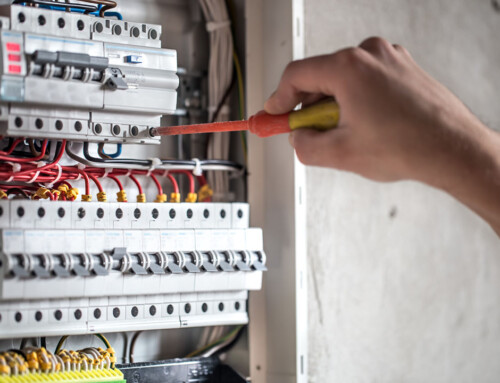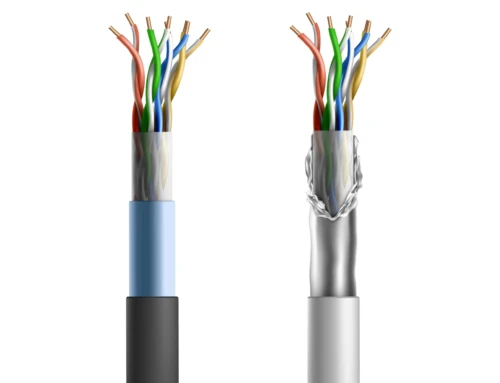Table of Contents
Electrical Safety Foundation International (ESFI) estimated that 51,000 electrical fires happen in the United States each year, causing over $1.3 billion in property damage. Electrical fire are the most common electrical emergencies a genuine threat that may cause catastrophic losses for your businesses and homes. Thus, it is critical to understand its dangers and how to respond to them.
This blog article teaches you all you need to know about electrical fires, including typical causes, warning indications, how to efficiently extinguish a fire, and preventative steps to keep your home safe. Let’s begin!
What is an Electrical Fire?
An electrical fire starts when electricity leaves its designated route, usually owing to poor wiring or inappropriate usage of electrical devices. Unlike other types of fires caused by conventional sources such as cooking or heating appliances, electrical fires can start quietly, with no apparent flames or immediate risk.
These flames can originate in various places, including walls, outlets, and appliances. This fire is hazardous since it can smolder unnoticed until conditions enable it to turn into a full-fledged conflagration. However, with adequate knowledge and preventative actions, you can drastically limit the occurrence of these potentially catastrophic incidents.
Common Causes of Electrical Fires
Understanding the most prevalent electric fire starters is the first step toward prevention. Here are nine key reasons why these flames ignite.
-
Overloading Circuits
When too many gadgets are connected to a single circuit, it can cause overheating and, eventually, a fire. Overloaded outlets cause most electrical fires. Hence, it is critical to exercise caution while connecting many devices to a single outlet.
-
Faulty Wiring
Short circuits and arcing can occur as a result of old, damaged, or improperly placed wire, potentially leading to an electrical fire.
-
Short Circuits
A short circuit occurs when the electrical current travels along an unintended pathway. This phenomenon can lead to excess heat generation caused by damaged insulation or other wiring components.
-
Arcing
Arcing happens when an electrical current jumps from one conductor to another, creating an immense amount of heat. This can occur within the walls of your home and is often due to poor connections or damaged wires.
-
Improper Use of Extension Cords
Extension cords are a short-term solution to providing additional electrical access. However, using them for prolonged periods can lead to overheating. In fact, using an extension cord as a permanent solution accounts for many electrical fires.
-
Lightning Strikes
Believe it or not, lightning strikes may start electrical fires by striking power cables or electrical equipment. While less common, this can occur during solid storms and should not be neglected.
-
Poor Maintenance and Malfunction
Older appliances are often the source of electrical flames. Wear and tear, compounded with poor maintenance, can raise the chance of malfunction.
-
Outdated Wiring
Wiring that does not comply with current safety requirements or is more than 30 years old is more likely to fail. It is necessary to replace old systems in order to lower the danger of fires drastically.
- Shocks or sparks from appliances
- Overloaded circuit breaker
- Flickering lights
- Frequent power outages
- Burning smell
-
Portable Heaters
Though portable heaters provide warmth during the colder months, they are a frequent cause of electrical fires. Always keep them away from combustible things and switch them off when not in use.
Signs of an Electrical Fire
Knowing the warning signs of an electrical fire might make the difference between timely action and catastrophic consequences. Watch out for these five warning signs:
-
Unusual Smells
Do you know what an electrical fire smells like? Well, a burning smell, particularly of plastic or sulfur, is a common electrical fire smell. If you notice such a strange odor, you must investigate promptly.
-
Discoloration of Outlets and Switches
Outlets and switches with burn marks or discoloration are early indicators. These changes suggest overheating or potential fire hazards.
-
Sparks or Arcing
Seeing sparks or hearing strange arcing noises might indicate a dangerous scenario. Any such incidents should be investigated immediately since continual sparking might cause a fire.
-
Unusual Sounds From Electrical Equipment
If your electrical gadgets start to hum, buzz, or make popping noises, consider this a red flag. Turn off the gadget and seek a professional.
-
Tripped Circuit Breaker or Blown Fuse
Frequent tripping of circuit breakers or blown fuses can indicate an overloaded circuit or a malfunction, which can lead to electrical fires if not treated immediately.
How to Put Out an Electrical Fire?
So, how do you put out an electrical fire? It is crucial to remember that no matter how irresistible it is, using water to put out an electrical fire can be incredibly dangerous. Instead, if you encounter such a situation, do the following:-
-
Turn Off the Power Source
The first step in dealing with an electrical fire is to turn off the power supply if it is safe to do so. This frequently prevents the fire from spreading.
-
Use a Fire Extinguisher (Class C)
Class C fire extinguishers are mainly intended to combat electrical fires. They use non-conductive materials, making them appropriate for this sort of situation.
-
Use Baking Soda
In the absence of a fire extinguisher, baking soda can be a simple but efficient instrument for putting out tiny electrical flames by limiting the oxygen required for combustion.
-
Remove the Oxygen Source
If available, a fire blanket or thick clothes might be used to smother the fire and cut off its oxygen supply. This strategy is effective for minor flames.
-
Call the Fire Department
Regardless of the extent of the fire, it is always a good idea to contact emergency services. They can tackle flames more effectively and safely.
What To Do if It’s a Big Electrical Fire?
If you are dealing with a major fire, take urgent action. Here are seven essential steps:
-
Evacuate Immediately
The safety of yourself and others is the first consideration. Evacuate the area without delay.
-
Call Emergency Services
As soon as you are secure outside, call 911. Give them factual information about the problem.
-
Don’t Use Water or Try to Put Out the Fire
Do not use water to extinguish an electrical fire. This might exacerbate the problem. Electricity and water do not mix. Therefore, avoid utilizing any liquids.
-
Close the Doors Behind You
If possible, shut the doors as you depart. This can assist in controlling the fire and keep it from spreading to neighboring locations.
-
Stay Low and Avoid Smoke Inhalation
Smoke may be as dangerous as fire. Stay as low to the ground as possible to avoid inhaling hazardous smoke while making your way to safety.
-
Take the Nearest Exit
Always utilize the nearest exit to leave the premises. Do not hesitate to leave.
-
Wait for Help Outside
Once outside, wait for emergency personnel to come. Follow their instructions, and don’t go back inside until you are approved.
How to Prevent Electrical Fires?
As they say, prevention is the best treatment! Here are six practical strategies to avoid electrical fires at home:
-
Regular Maintenance of Electrical Systems
Regular inspections and maintenance of your electrical systems can identify possible risks before they become serious problems.
-
Use the Proper Electrical Cords and Outlets
Make sure you only utilize extension cables and outlets that suit your power requirements. Avoid daisy-chaining many wires together.
-
Avoid Overloading Circuits
Be cautious of the amount of electricity you are drawing from your outlets. To avoid overheating, stick to the prescribed temperature limitations.
-
Unplug Electronics While Not in Use
Consider disconnecting gadgets while not in use, mainly if they produce heat or are older versions. This simple action can reduce dangers.
-
Install Smoke Detectors and Carbon Monoxide Alarms
These necessary equipment can deliver important early warnings. Make sure you test them on a regular basis and replace the batteries as required.
-
Be Cautious With Electrical Equipment During Storms
During storms, avoid using electrical devices that might be damaged by power surges, such as laptops and televisions. Unplug them whenever feasible to provide extra safety.
-
Install Arc-Fault Circuit Interrupters (AFCIs)
AFCIs are specialized circuit breakers designed to detect and interrupt dangerous electrical arcs that can ignite fires. Consider installing AFCIs in bedrooms, kitchens, and other high-risk areas.
The value of safety and alertness when working with electricity cannot be emphasized enough. Understanding the probable electric fire starters, as well as taking preventive actions, dramatically minimizes the risks. So, always remember to check your home’s electrical systems and seek expert help if you have any issues.
Consider scheduling a professional electrical inspection to guarantee your house is free of electrical hazards. Remember, there is always more to learn, and remaining knowledgeable helps to ensure your own and others’ safety.
Taking action today leads to a safer tomorrow. Let’s work together to protect your homes and communities from electrical fires!
Frequently Asked Questions (FAQs)
What are the types of fire?
There are six distinct types of fires, each requiring specific handling methods.
- Class A fires involve ordinary combustibles like wood and paper.
- Class B fires are fuelled by flammable liquids such as gasoline and oil.
- Class C fires pertain to electrical equipment.
- Moving on to Class D, these concerns combustible metals, including magnesium and aluminum.
- Class K fires arise from cooking oils and fats.
Understanding these classifications is crucial for effective fire management and safety strategies.
What class is an electrical fire?
Electrical fires fall under Class C hazards. These types of fires involve energized electrical equipment and require specific extinguishing methods to ensure safety.
Which fire extinguisher is used for electrical fire?
For electrical fires, a Class C fire extinguisher is the go-to choice. These extinguishers contain agents that do not conduct electricity, ensuring safety when applied to electrical equipment.
What color is a fire extinguisher for electrical fire?
When it comes to fire extinguishers suitable for electrical fires, they are typically colored black or blue. This color coding helps users identify the suitable extinguisher quickly in emergencies.
Is an ABC fire extinguisher suitable for electrical fires?
When it comes to tackling electrical fires, an ABC fire extinguisher is a good choice. It effectively suppresses flames caused by various materials, including those found in electrical equipment.
What is the leading cause of electrical fires?
Electrical fires often start due to problems with outlets or aging sockets that lack proper grounding. Faulty connections can create sparks, leading to dangerous situations in homes and buildings. Ensuring electrical systems are well-maintained can significantly reduce the risk of these fires occurring.
Does solar energy cause as many fires as electricity?
When comparing fire risks between solar energy and electricity, solar systems are the safer choice. Although malfunctioning or damaged solar panels can lead to fires, these cases are uncommon. In contrast, electrical fires occur more frequently because of issues like faulty wiring and circuit overloads.
Proper installation and maintenance of solar energy setups further reduce the likelihood of any fire hazards, making them a reliable alternative to conventional electrical systems.






